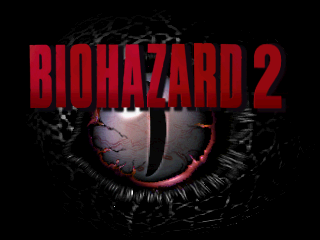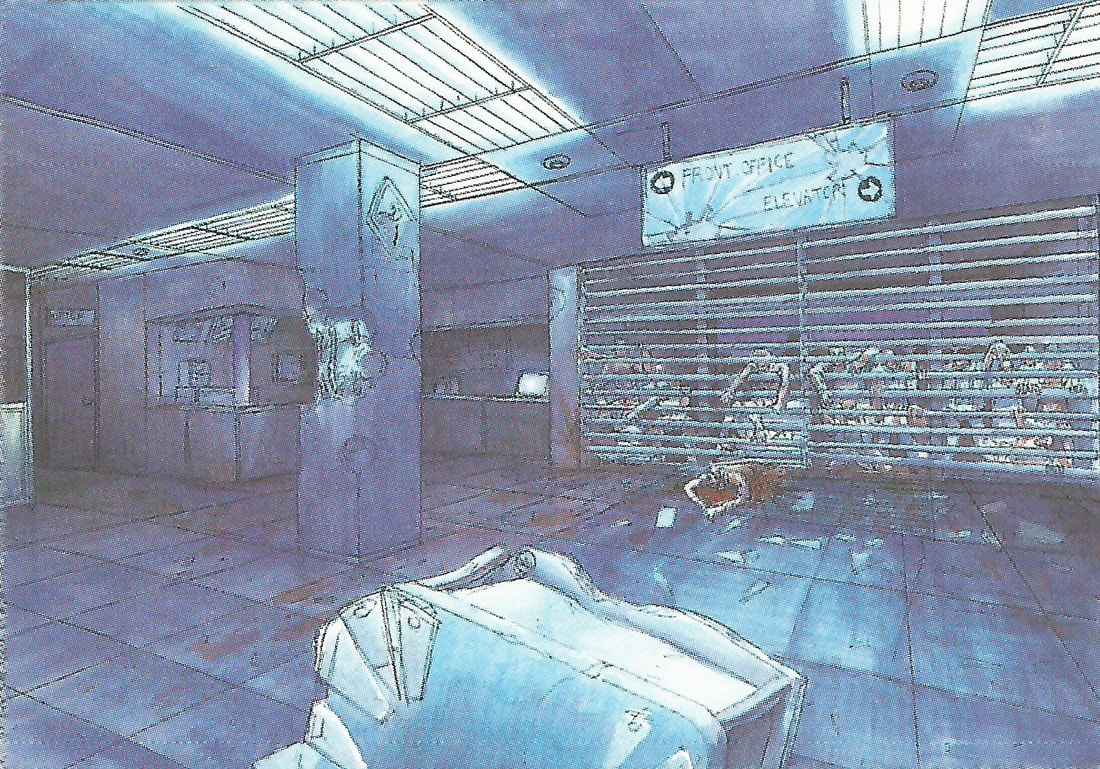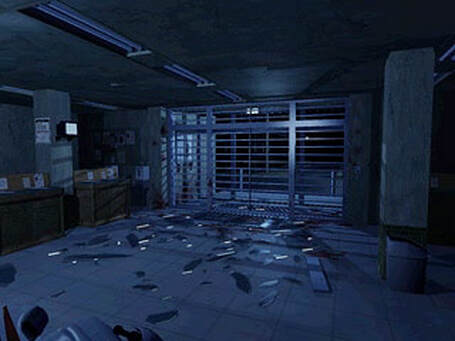BIOHAZARD 1.5 (バイオハザード1.5) was the initial design of the second game in the series. It was scrapped mid-1997 and reconstructed into BIOHAZARD 2.
Story
On July 25, 1998, the surviving officers of S.T.A.R.S. return to the local R.P.D. (Raccoon Police Department). After a brief stay in the police infirmary, they are transferred to the state general hospital. Based on their eyewitness accounts, the R.P.D. began an investigation into the giant pharmaceutical company "Umbrella Corporation", revealing the truth of their illegal biological experiments.
In September, Umbrella scientist William Birkin nears the completion of the G-virus, a viral weapon designed for the purpose of human evolution. However, he grows disillusioned with the company and prepares to blow the whistle on its illegal experiments and biological weapons business. In the event of an emergency, he hid the antibodies and research data of the t-virus in the pendant of his daughter Sherry Birkin. In response, the company sends agents of its U.S.S. (Umbrella Security Service) to assassinate him. The agents succeed, but Birkin becomes infected with the incomplete G-virus and undergoes a mutation transforming him into a giant, violent creature.
Distraught and losing her reason at the death of her husband, Annette Birkin decides to exact revenge against Umbrella by taking his whistle-blowing into her own hands. She enacts this plan by intentionally leaking the t-virus into the city in order to expose Umbrella's illegal research to the world, but her frightened daughter Sherry Birkin runs away in the process. However, the company anticipates this plot and sets into motion a scheme of its own to use human experimentation with the t-virus on Raccoon citizens for a demonstration to show its power to their customers.
Bizarre murder cases begin to frequently occur in Raccoon City due to a mysterious "cannibal disease." This disease, spreading at unbelievable speed, is caused by t-virus infection. The city quickly becomes overrun by countless wandering Zombies, killing the majority of the population. Located in the center of Raccoon City, the R.P.D. building is no different from everywhere else. Attacked by Zombies, its functions are completely terminated. On the top floor, some surviving police officers attempt to hold out. They managed to defend themselves from the Zombies, but are running out of food and ammo and have reached the limit of their stamina. The city has been overrun by zombies, and the number of the dead continues to rise rapidly as time rolls on.
In September, Umbrella scientist William Birkin nears the completion of the G-virus, a viral weapon designed for the purpose of human evolution. However, he grows disillusioned with the company and prepares to blow the whistle on its illegal experiments and biological weapons business. In the event of an emergency, he hid the antibodies and research data of the t-virus in the pendant of his daughter Sherry Birkin. In response, the company sends agents of its U.S.S. (Umbrella Security Service) to assassinate him. The agents succeed, but Birkin becomes infected with the incomplete G-virus and undergoes a mutation transforming him into a giant, violent creature.
Distraught and losing her reason at the death of her husband, Annette Birkin decides to exact revenge against Umbrella by taking his whistle-blowing into her own hands. She enacts this plan by intentionally leaking the t-virus into the city in order to expose Umbrella's illegal research to the world, but her frightened daughter Sherry Birkin runs away in the process. However, the company anticipates this plot and sets into motion a scheme of its own to use human experimentation with the t-virus on Raccoon citizens for a demonstration to show its power to their customers.
Bizarre murder cases begin to frequently occur in Raccoon City due to a mysterious "cannibal disease." This disease, spreading at unbelievable speed, is caused by t-virus infection. The city quickly becomes overrun by countless wandering Zombies, killing the majority of the population. Located in the center of Raccoon City, the R.P.D. building is no different from everywhere else. Attacked by Zombies, its functions are completely terminated. On the top floor, some surviving police officers attempt to hold out. They managed to defend themselves from the Zombies, but are running out of food and ammo and have reached the limit of their stamina. The city has been overrun by zombies, and the number of the dead continues to rise rapidly as time rolls on.
Development
The game's basic setting of Raccoon City was determined by producer Shinji Mikami, who then appointed Hideki Kamiya, chief planner of the first game, as director. In the initial stages of development, Mikami often had creative disagreements with Kamiya, and tried to influence the team with his own direction. He eventually stepped back to an overseeing role and only demanded to be shown the current build once a month. The game was officially announced with early footage at V-JUMP Festival '96 in July.
The scenario was written by Kamiya while the planners requested artist Isao Oishi to write an interrelation chart as the initial setting of the game's characters. The scenario was criticized by general manager Yoshiki Okamoto for several problems, including the fact that it seemed too conclusive. During a period in which the team had made no progress rewriting the scenario, Okamoto was introduced to professional screenwriter Noboru Sugimura, who was enthusiastic about the first game's story. Sugimura was initially consulted on a trial basis and joined in the reshaping of the game, impressing Okamoto with the ease he came up with solutions to its problems.
The scenario initially had three goals, firstly to show the power of Umbrella while filling out the previous game’s foreshadowing, since the team intended for a tentative conclusion in a third game. Secondly, to get players to feel hostility towards Umbrella by carefully choreographing the company's cruelty. And finally, to create and apply human characters in the story to convey to players that, rather than Zombies and creatures, people were also terrifying. A new storytelling mechanic dubbed the "Zapping System" was conceived by Oishi with inspiration from the movie Back to the Future II. This system would allow the two character scenarios to interact to a limited extent, compared to the parallel yet disconnected scenarios of BIO1.
One issue Sugimura had with the old scenario was the lack of connection to the previous game, to which Kamiya initially objected but later relented. After continued meetings, the team decided that the lead female character Elza Walker would be rewritten as the younger sister of Chris Redfield, and her name was changed to Claire on the spot. Believing the game's assets to be good individually but not yet satisfactory as a whole, Mikami expected that everything would coalesce in the three months leading up to the projected May 1997 release date. However, while rewriting the scenario, Sugimura eventually suggested that the team start over. Mikami agreed based on his own issues with the game and it was officially scrapped at a 60-80% complete stage to the surprise of CAPCOM and the media.
Okamoto requested that Sugimura write a full scenario for the reconstruction. Oishi's draft was used as a basis. The concept of William Birkin betraying Umbrella was kept but the motive and scientist himself were rewritten from a "good guy" into a more morally gray area, while the role of the G-virus was greatly expanded into a central plot point. Unlike the previous scenario, Umbrella was no longer under investigation and had almost entirely gotten away with the events of the first game. Police chief Brian Irons became a villain in collusion with Umbrella, while Marvin Branagh's role was greatly downsized from a playable partner character to an injured officer who later becomes a Zombie, a role previously filled by the character of Roy who was removed altogether. The character of John was rewritten as gun shop owner Robert Kendo, while Umbrella researcher Ada Wong became an industrial spy.
As work progressed to completely remake the game, a new edition of the first game was decided, BIO HAZARD Directors Cut. Programmers on the BIO2 team were temporarily diverted to the development of Directors Cut. Meanwhile, the BIO2 team conducted illegal research trips to Western-style buildings in Japan, where they were caught and thrown out. The research material from this trip was later utilized in the creation of brand-new stages in the game which possessed more "wood" designs compared to the previous "metal."
Okamoto requested the use of the 1.5 engine for the development of a new game named Onimusha, which was based on his idea of a "Sengoku BIOHAZARD" game.
The scenario was written by Kamiya while the planners requested artist Isao Oishi to write an interrelation chart as the initial setting of the game's characters. The scenario was criticized by general manager Yoshiki Okamoto for several problems, including the fact that it seemed too conclusive. During a period in which the team had made no progress rewriting the scenario, Okamoto was introduced to professional screenwriter Noboru Sugimura, who was enthusiastic about the first game's story. Sugimura was initially consulted on a trial basis and joined in the reshaping of the game, impressing Okamoto with the ease he came up with solutions to its problems.
The scenario initially had three goals, firstly to show the power of Umbrella while filling out the previous game’s foreshadowing, since the team intended for a tentative conclusion in a third game. Secondly, to get players to feel hostility towards Umbrella by carefully choreographing the company's cruelty. And finally, to create and apply human characters in the story to convey to players that, rather than Zombies and creatures, people were also terrifying. A new storytelling mechanic dubbed the "Zapping System" was conceived by Oishi with inspiration from the movie Back to the Future II. This system would allow the two character scenarios to interact to a limited extent, compared to the parallel yet disconnected scenarios of BIO1.
One issue Sugimura had with the old scenario was the lack of connection to the previous game, to which Kamiya initially objected but later relented. After continued meetings, the team decided that the lead female character Elza Walker would be rewritten as the younger sister of Chris Redfield, and her name was changed to Claire on the spot. Believing the game's assets to be good individually but not yet satisfactory as a whole, Mikami expected that everything would coalesce in the three months leading up to the projected May 1997 release date. However, while rewriting the scenario, Sugimura eventually suggested that the team start over. Mikami agreed based on his own issues with the game and it was officially scrapped at a 60-80% complete stage to the surprise of CAPCOM and the media.
Okamoto requested that Sugimura write a full scenario for the reconstruction. Oishi's draft was used as a basis. The concept of William Birkin betraying Umbrella was kept but the motive and scientist himself were rewritten from a "good guy" into a more morally gray area, while the role of the G-virus was greatly expanded into a central plot point. Unlike the previous scenario, Umbrella was no longer under investigation and had almost entirely gotten away with the events of the first game. Police chief Brian Irons became a villain in collusion with Umbrella, while Marvin Branagh's role was greatly downsized from a playable partner character to an injured officer who later becomes a Zombie, a role previously filled by the character of Roy who was removed altogether. The character of John was rewritten as gun shop owner Robert Kendo, while Umbrella researcher Ada Wong became an industrial spy.
As work progressed to completely remake the game, a new edition of the first game was decided, BIO HAZARD Directors Cut. Programmers on the BIO2 team were temporarily diverted to the development of Directors Cut. Meanwhile, the BIO2 team conducted illegal research trips to Western-style buildings in Japan, where they were caught and thrown out. The research material from this trip was later utilized in the creation of brand-new stages in the game which possessed more "wood" designs compared to the previous "metal."
Okamoto requested the use of the 1.5 engine for the development of a new game named Onimusha, which was based on his idea of a "Sengoku BIOHAZARD" game.



